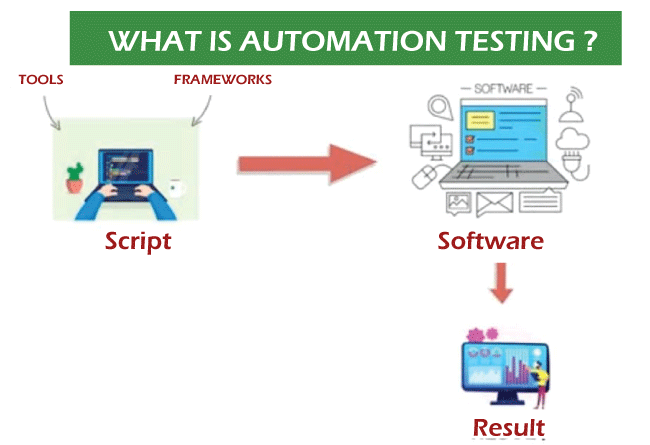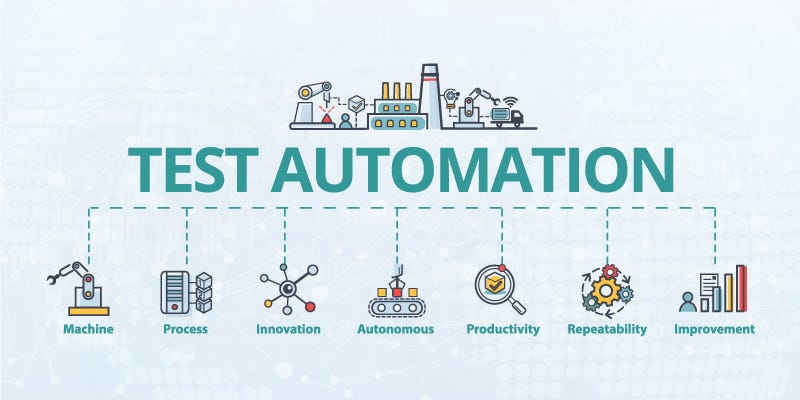Mastering Automation Testing: Tools, Strategies, and Advantages
Mastering Automation Testing: Tools, Strategies, and Advantages
Blog Article
From Manual to Automated Testing: A Comprehensive Guide to Transitioning Efficiently and Successfully
In the realm of software program screening, the change from guidebook to automated procedures has actually ended up being an increasingly vital change for companies looking for to boost effectiveness and precision in their testing methods. The trip from guidebook to automated screening is not without its challenges, yet when come close to strategically and with a clear plan in mind, the benefits can be substantial.
Advantages of Automated Evaluating
Automated screening provides numerous advantages, boosting effectiveness and precision in software application development procedures. One key benefit is the substantial decrease in testing time. Automated tests can be run at the same time on multiple gadgets and operating systems, dramatically speeding up the screening stage contrasted to hand-operated testing. This raised efficiency enables faster feedback on the high quality of the software program, allowing programmers to identify and resolve problems immediately.
Additionally, automated screening guarantees a greater level of precision in finding issues. Considering that automated tests comply with predefined manuscripts, human mistake is decreased, resulting in even more dependable examination outcomes. Uniformity in screening is additionally boosted, as automated tests execute the same steps specifically each time they are run. This consistency is vital in ensuring that all performances of the software application are thoroughly checked, reducing the possibility of undetected pests sliding via to manufacturing.
Selecting the Right Devices

Firstly, examine your needs and purposes. Recognize the range of your project, the modern technologies included, and the capability of your team. This analysis will certainly assist you figure out the attributes and abilities you call for in your screening devices.
Second of all, think about the compatibility of the devices with your existing systems and processes. Seamless assimilation with your existing software application advancement lifecycle is vital to make certain a smooth change to automation.
Additionally, examine the scalability and adaptability of the devices. As your testing requires evolve, the tools need to have the ability to adjust and accommodate changes efficiently.
Last but not least, consider the support and neighborhood around the devices. Durable support and an active individual neighborhood can supply important sources and support when applying automated screening. By thoroughly considering these aspects, you can choose the right tools that align with your demands and set the phase for a successful transition to automated testing.
Writing Effective Test Scripts

When crafting test scripts, it is necessary to consider the certain requirements of the software program being examined and ensure that the scripts address all crucial visit the site functionalities. Clear and detailed calling conventions for examination manuscripts and test situations can improve readability and maintainability. Additionally, incorporating error handling devices within the test scripts can aid in recognizing and resolving concerns without delay.
Furthermore, arranging examination scripts into modular elements can boost reusability and scalability, minimizing redundancy and improving effectiveness in test manuscript maintenance. Routine testimonials and updates to test manuscripts are vital to maintain rate with progressing software application requirements and capabilities. By complying with these principles, testers can develop robust and reliable examination scripts that contribute substantially to the success of automated testing processes.
Integrating Automation Into Workflows
By effortlessly incorporating automated screening devices like Selenium or Appium into the software advancement lifecycle, teams can attain faster responses on code changes, leading to quicker pest discovery and resolution. This assimilation permits for constant testing throughout the development procedure, making certain that any type of concerns are recognized early on, resulting in higher software top quality. Proper combination of automation tools needs cooperation in between advancement, testing, and procedures teams to develop a unified workflow that maximizes performance and performance in supplying high-grade software application products.
Making Certain a Smooth Change
Efficiently transitioning to automated testing involves precise planning and cautious implementation to reduce disturbances and make the most of performance in the software program advancement procedure - automation testing. To make sure a smooth transition, it is vital to begin by conducting a complete assessment of the current screening procedures and identifying locations where automation can bring the most considerable advantages. Engaging with all stakeholders early while doing so, consisting of designers, testers, and job supervisors, is critical for amassing assistance and buy-in for the automation initiative
Communication is key throughout this shift stage. Clear communication of the objectives, advantages, and assumptions of automated screening helps to take care of any type of resistance or problems that might emerge. In addition, giving sufficient training and resources for employee to upskill in automation devices and techniques is crucial for ensuring an effective transition.

Verdict
In verdict, transitioning from handbook to automated screening offers countless benefits, including increased performance and integrity. By selecting the proper devices, composing reliable examination scripts, and incorporating automation flawlessly into workflows, organizations can make sure a successful and smooth transition. It is necessary to accept automation as a useful possession in software application screening procedures to boost overall high quality and performance.
In the world of software application screening, the shift from guidebook to automated procedures has come to be a significantly vital shift for companies visit site looking for to boost performance and accuracy in their screening methods. Automated tests can be run simultaneously on multiple devices and running systems, drastically speeding up the testing phase compared to manual screening. Uniformity in screening is likewise enhanced, as automated tests perform the very same steps specifically each time they are run.To make certain the successful application of picked screening devices, the development of efficient examination manuscripts plays a vital function in confirming the capability and performance of automated procedures - automation testing. By following these principles, testers can develop effective and robust test manuscripts that contribute dramatically to the success of automated screening procedures
Report this page